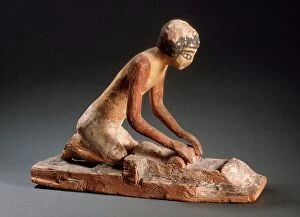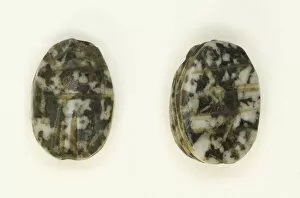First Intermediate Period Collection
The First Intermediate Period in ancient Egypt was a time of transition and change, marked by various artistic and cultural expressions
All Professionally Made to Order for Quick Shipping
The First Intermediate Period in ancient Egypt was a time of transition and change, marked by various artistic and cultural expressions. The fragments of a stela depicting fowling in the marshes at Sakkara give us a glimpse into the daily life and activities of the people during this period. Similarly, a wall fragment from a tomb showing a herdsman showcases the importance of animal husbandry in Egyptian society. Another wall fragment from a tomb depicts a harvest scene, highlighting the significance of agriculture as an essential part of their livelihoods. This is further emphasized by scarabs with hieroglyphs such as wedjat eyes, nfr-signs, and nbw-signs that symbolize fertility and prosperity. In contrast to these inscribed scarabs are those with linear motifs, which reflect the evolving artistic styles during this era. An uninscribed scarab also suggests that not all objects were adorned with elaborate engravings but still held cultural value. A jar from the Old Kingdom serves as evidence that artifacts from previous dynasties continued to be used or repurposed during this transitional period. Scarabs with plain bases further exemplify how simplicity became prominent in art during this time. Fragmented stelae depicting plowing, harvesting, and fowling provide insights into agricultural practices while showcasing religious beliefs intertwined with everyday activities. Additionally, brewing beer was an important aspect of Egyptian culture as seen through tomb models like one found in Meketra. Offering bearers depicted on another wall fragment highlight religious rituals performed for deities during this period. Finally, decorative details on clay fragments mixed with straw and plaster reveal transportation methods for grain bags—an essential element for sustenance—during this era.













